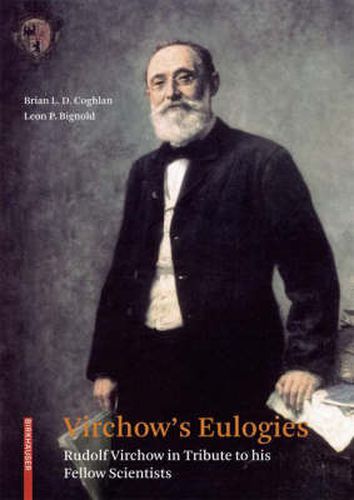Readings Newsletter
Become a Readings Member to make your shopping experience even easier.
Sign in or sign up for free!
You’re not far away from qualifying for FREE standard shipping within Australia
You’ve qualified for FREE standard shipping within Australia
The cart is loading…






Rudolph Virchow (1821-1902) was a leading figure in the medical, political and intellectual life of Germany in the second half of the nineteenth century. His most famous work was Cellular Pathology . Virchow wrote many books and edited several journals, including ‘Virchow’s Archive’ and was a member of numerous professional societies.
This book is a compilation of Virchow’s memorial addresses on nineteen of his teachers -especially Johannes Muller and Johann Lukas Schoenlein - colleagues and students as well as one concerning Morgagni. There is an introduction to the man and his times, and copious editors’ notes to explain allusions and events mentioned in the text with which some modern readers may be unfamiliar. There is also an extensive bibliography incorporating German sources, with English translations of all titles. The book gives a fascinating multi-dimensional view of scientists and their lives in nineteenth century Germany.
$9.00 standard shipping within Australia
FREE standard shipping within Australia for orders over $100.00
Express & International shipping calculated at checkout
Rudolph Virchow (1821-1902) was a leading figure in the medical, political and intellectual life of Germany in the second half of the nineteenth century. His most famous work was Cellular Pathology . Virchow wrote many books and edited several journals, including ‘Virchow’s Archive’ and was a member of numerous professional societies.
This book is a compilation of Virchow’s memorial addresses on nineteen of his teachers -especially Johannes Muller and Johann Lukas Schoenlein - colleagues and students as well as one concerning Morgagni. There is an introduction to the man and his times, and copious editors’ notes to explain allusions and events mentioned in the text with which some modern readers may be unfamiliar. There is also an extensive bibliography incorporating German sources, with English translations of all titles. The book gives a fascinating multi-dimensional view of scientists and their lives in nineteenth century Germany.